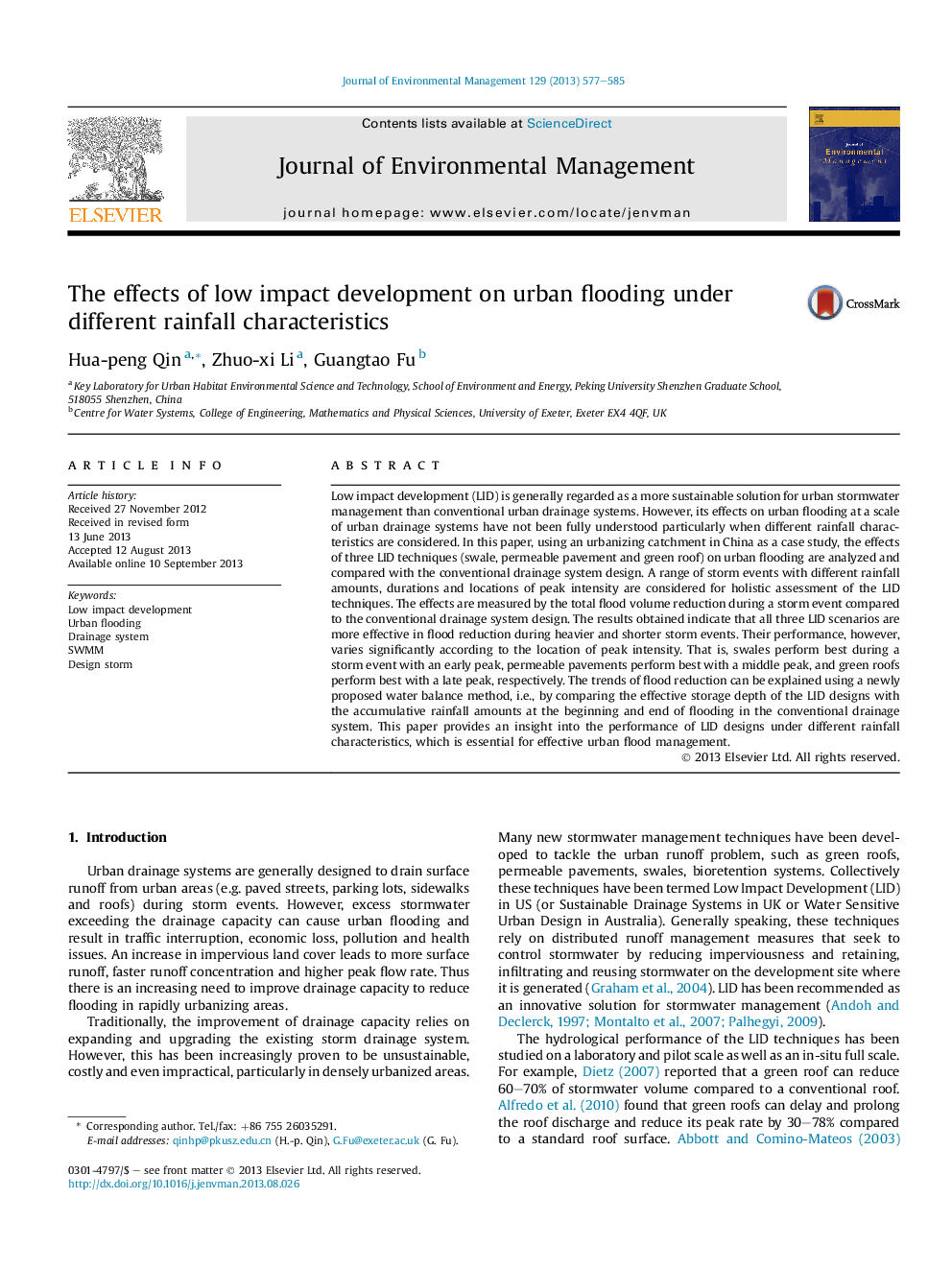| Article ID | Journal | Published Year | Pages | File Type |
|---|---|---|---|---|
| 1056202 | Journal of Environmental Management | 2013 | 9 Pages |
•Effects of swales, permeable pavements and green roofs on urban flooding are analyzed.•They are more effective in flood reduction during heavier and shorter storm events.•Their performance varies significantly according to the location of storm peak.•The trends of flood reduction can be explained by a proposed water balance method.
Low impact development (LID) is generally regarded as a more sustainable solution for urban stormwater management than conventional urban drainage systems. However, its effects on urban flooding at a scale of urban drainage systems have not been fully understood particularly when different rainfall characteristics are considered. In this paper, using an urbanizing catchment in China as a case study, the effects of three LID techniques (swale, permeable pavement and green roof) on urban flooding are analyzed and compared with the conventional drainage system design. A range of storm events with different rainfall amounts, durations and locations of peak intensity are considered for holistic assessment of the LID techniques. The effects are measured by the total flood volume reduction during a storm event compared to the conventional drainage system design. The results obtained indicate that all three LID scenarios are more effective in flood reduction during heavier and shorter storm events. Their performance, however, varies significantly according to the location of peak intensity. That is, swales perform best during a storm event with an early peak, permeable pavements perform best with a middle peak, and green roofs perform best with a late peak, respectively. The trends of flood reduction can be explained using a newly proposed water balance method, i.e., by comparing the effective storage depth of the LID designs with the accumulative rainfall amounts at the beginning and end of flooding in the conventional drainage system. This paper provides an insight into the performance of LID designs under different rainfall characteristics, which is essential for effective urban flood management.
